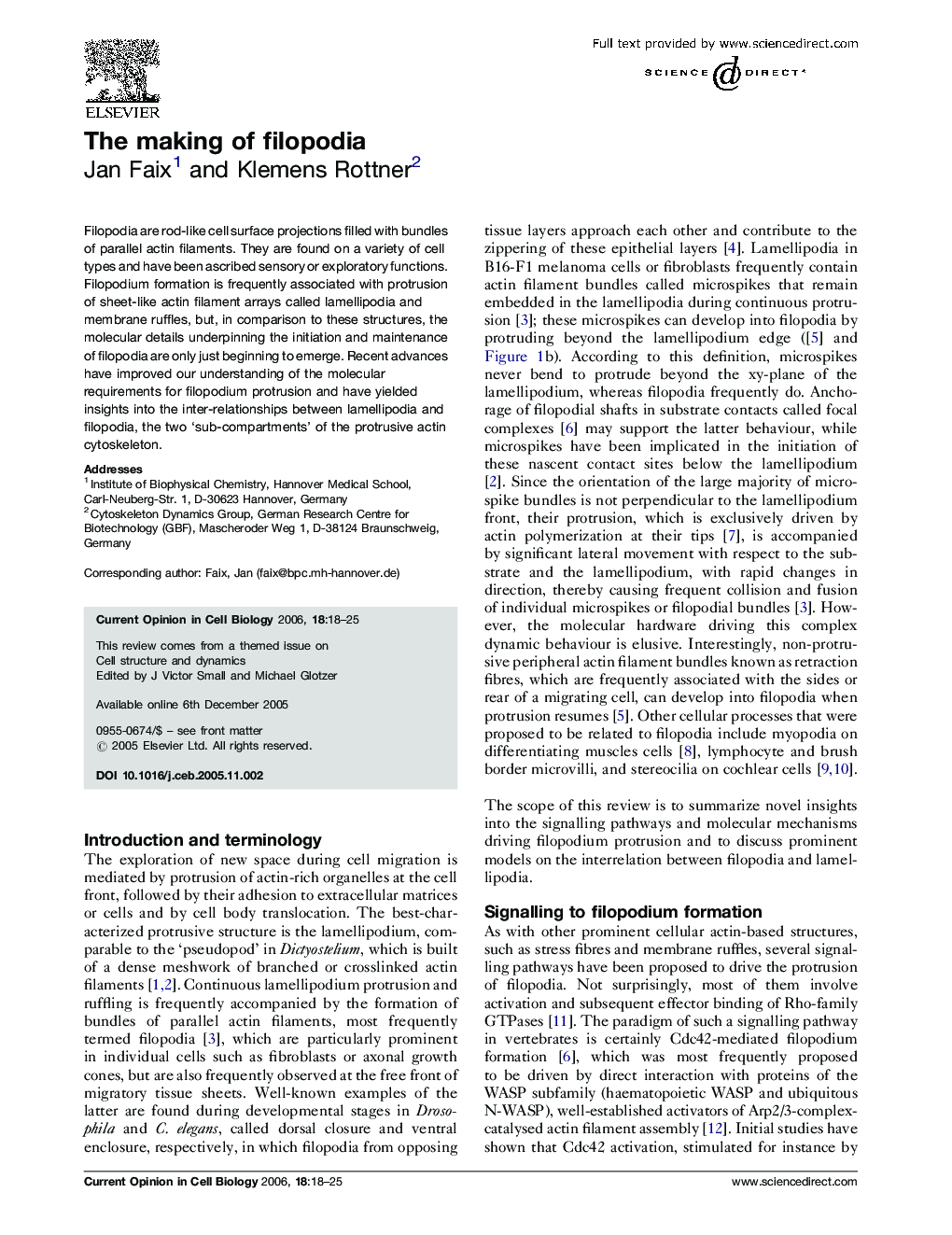| Article ID | Journal | Published Year | Pages | File Type |
|---|---|---|---|---|
| 2170393 | Current Opinion in Cell Biology | 2006 | 8 Pages |
Abstract
Filopodia are rod-like cell surface projections filled with bundles of parallel actin filaments. They are found on a variety of cell types and have been ascribed sensory or exploratory functions. Filopodium formation is frequently associated with protrusion of sheet-like actin filament arrays called lamellipodia and membrane ruffles, but, in comparison to these structures, the molecular details underpinning the initiation and maintenance of filopodia are only just beginning to emerge. Recent advances have improved our understanding of the molecular requirements for filopodium protrusion and have yielded insights into the inter-relationships between lamellipodia and filopodia, the two ‘sub-compartments’ of the protrusive actin cytoskeleton.
Related Topics
Life Sciences
Biochemistry, Genetics and Molecular Biology
Cell Biology
Authors
Jan Faix, Klemens Rottner,
